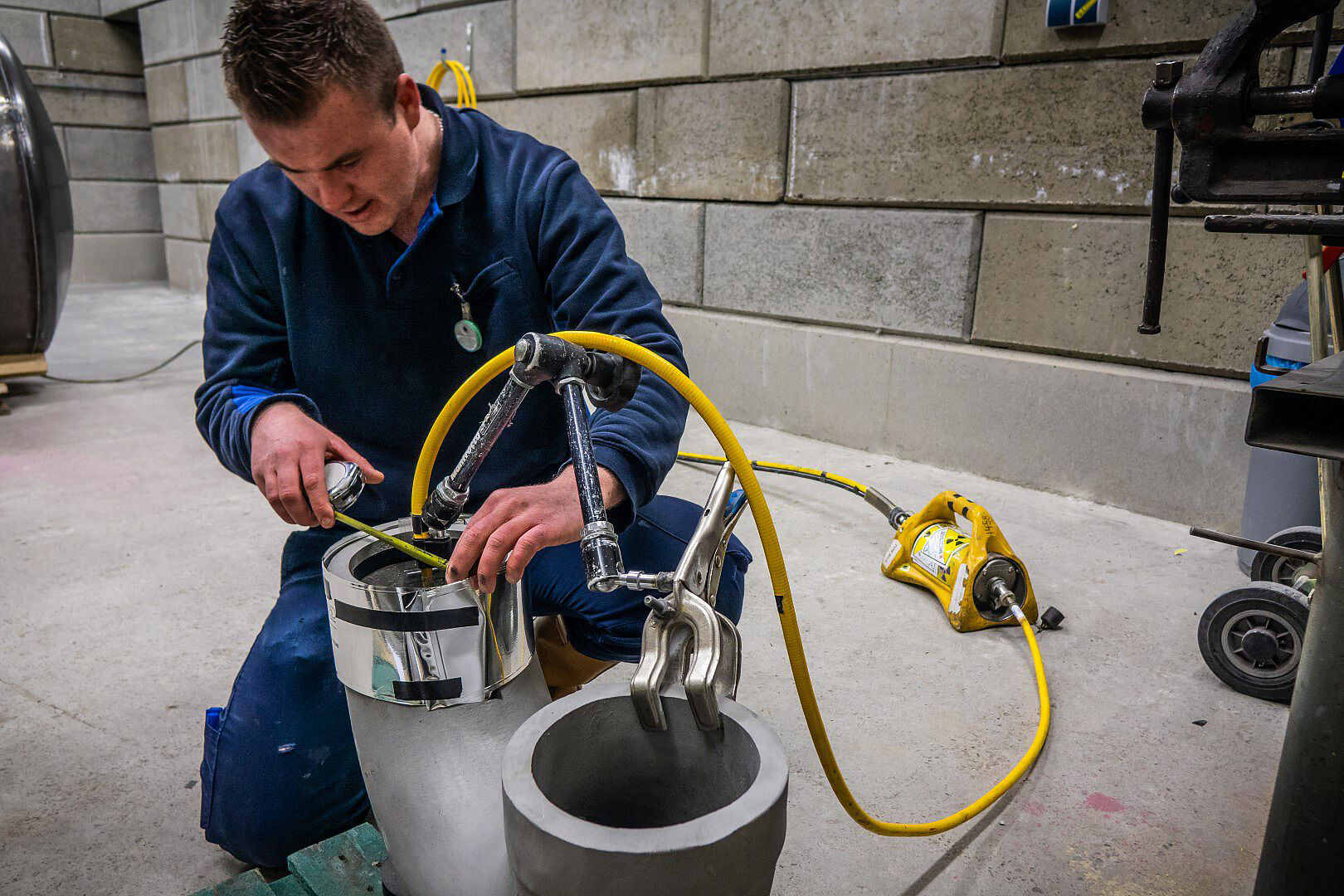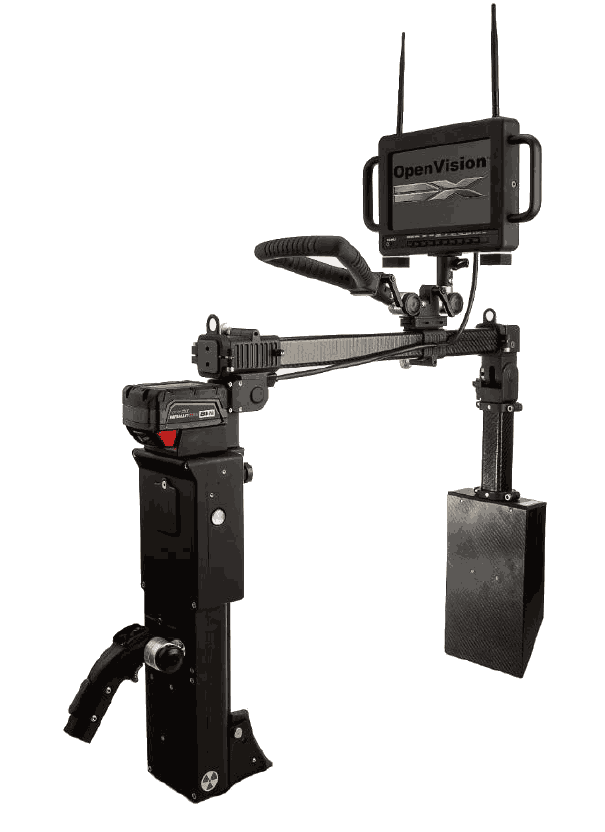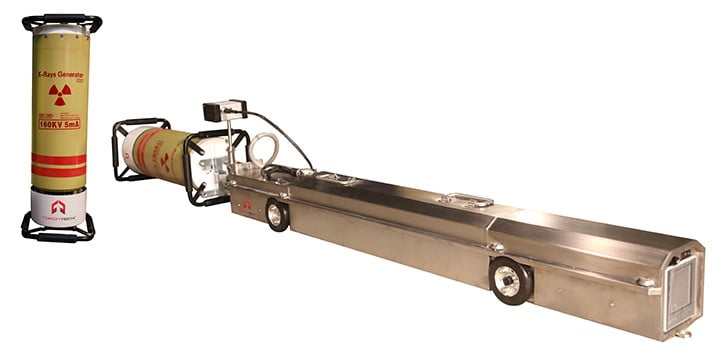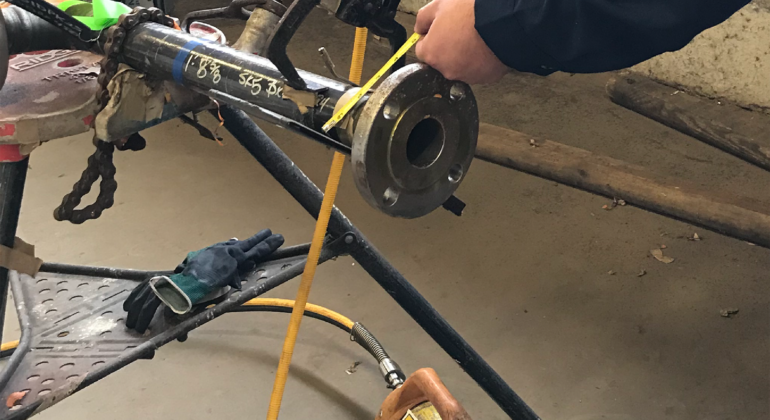Industrial Radiography or Radiographic Testing (RT) uses ionizing electromagnetic radiation to view objects in a way that can't be seen otherwise. It is not to be confused with the use of ionizing radiation to change or modify objects; radiography's purpose is strictly for viewing. It is a method of inspecting materials for hidden flaws by using the capability of short wavelength electromagnetic radiation, x-rays and gamma radiation, to penetrate various materials.
The vast majority of radiography concerns the testing and grading of welds on pressurized piping, pressure vessels, high-capacity storage containers, pipelines, and some structural welds. Other tested materials include concrete (locating rebar or conduit), welder's test coupons, machined parts, plate metal, or pipewall (locating anomalies due to corrosion or mechanical damage). Theoretically, industrial radiographers could radiograph any solid, flat material (walls, ceilings, floors, square or rectangular containers) or any hollow cylindrical or spherical object.
Our radiographic services span a wide spectrum, from utilizing 4 MEV units for large and thick castings to portable X-Ray cameras for field weld inspections. Gamma sources range from low-level fluoroscopic units for real-time corrosion surveys to Ir-192, Se-75, and Co-60 sources for weld inspections and thick component examinations. Through precise analysis of radiographic images, we identify changes in material thickness and density, crucial indicators of structural integrity and asset performance.
In many locations in the United States, industrial radiographers are required by governing authorities, i.e., the State in which the testing occurs, to adhere to certain mandatory safety standards that specify such things as the use of certain types of safety equipment and working in pairs. The safety equipment usually includes at least one of four basic items: a radiation survey meter (such as a Geiger/Mueller counter), an alarming dosimeter or rate meter, a gas-charged dosimeter, and a film badge or thermoluminescent dosimeter (TLD). <br><br>In Texas, Title 25 Texas Administrative Code (TAC) Section §289.255 requires that individuals who use radioactive material or x-ray machines during nondestructive testing activities have an acceptable knowledge of radiation safety practices and principles gained through minimum training requirements, typically a 40 hour radiation safety course, followed by a State mandated examination (follow this link to the Texas Department of State Helath Services Radiation Control Program site for more information: http://www.dshs.state.tx.us/radiation/ir.shtm).




